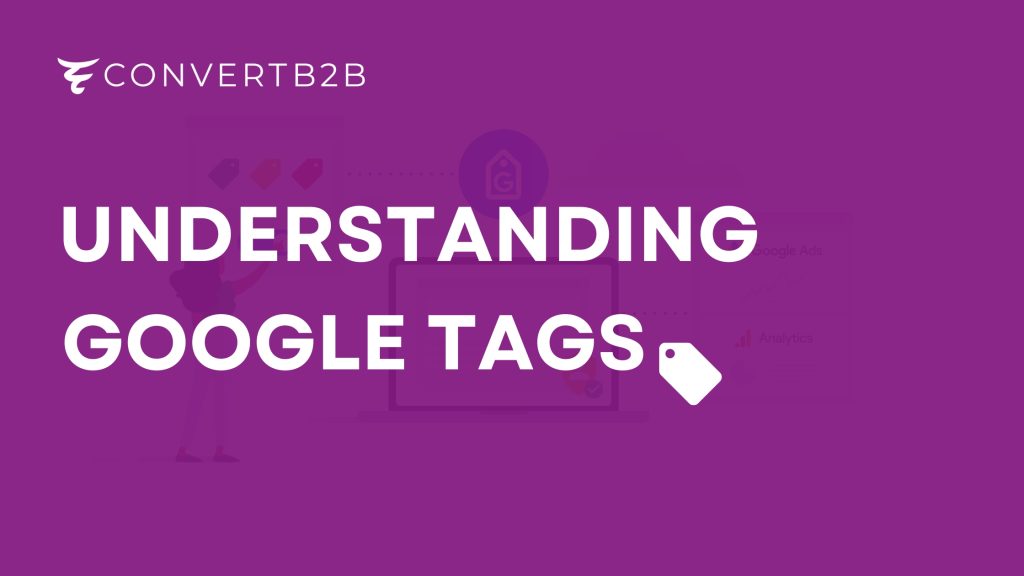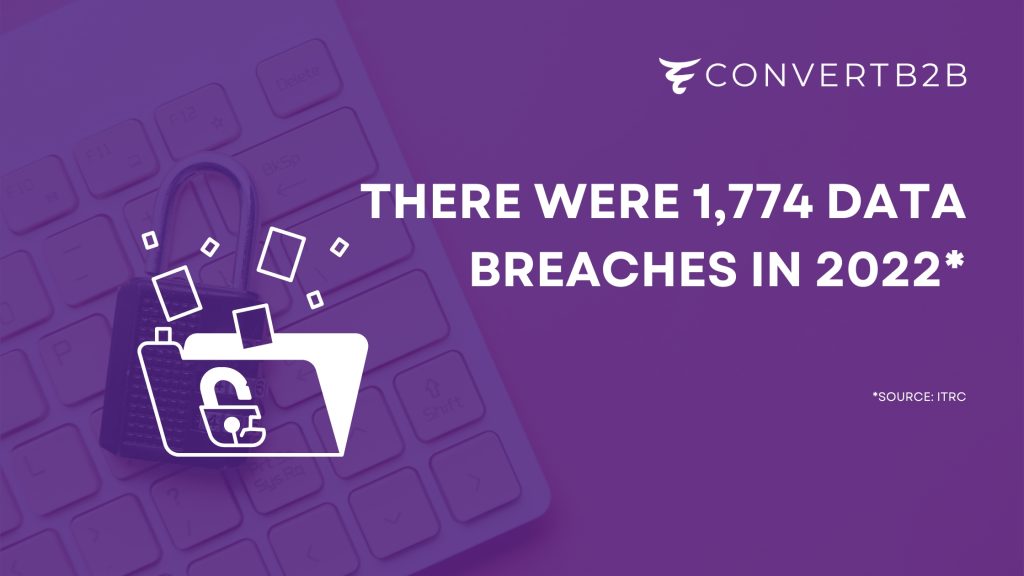Blog
Understanding Google Consent Mode V2 Among Broader Concerns for Data Privacy in 2024

The digital landscape is shifting, and the way we collect and use data is no exception. With new data privacy regulations like the EU’s Digital Markets Act (DMA) coming into effect, B2B marketers need to adapt or risk getting left behind.
One hot topic stirring controversy and confusion is Google’s Consent Mode V2. What is it, and why should you care?
Breaking Down Google Consent Mode V2
Think of Consent Mode V2 as Google’s way of playing by the new privacy rules. It’s basically an upgrade for Google Ads and Analytics. These two platforms are used in combination by digital marketers for various marketing and advertising purposes. The recent Consent Mode update ensures these platforms respect user consent preferences while still providing valuable insights for your marketing campaigns.
At its core, Consent Mode V2 introduces additional consent states for user data usage and sharing for advertising purposes, enhancing compliance with data protection regulations like GDPR and ePrivacy Directive.
With the new update, Google tags will continue to operate according to user consent preferences, providing more accurate and comprehensive analytical data and precise conversion optimization.

Understanding Google Tags With Respect to User Consent
For those not aware: Google tags are snippets of code that are added to a website to track user behavior and collect data. They are used to integrate with analytics, marketing, and support platforms. Google Tag Manager is a free tool that allows you to install, store, and manage marketing tags without modifying website code.
The purpose of Google tags is to collect data about user behavior on a website, such as how long users visit a page, form submissions, how they arrived on the site, which links they clicked, or even what products they removed from their shopping cart. This data is then used to optimize digital marketing activities and improve the overall user experience by delivering tailored content and experiences.
Google Consent Mode V2 essentially makes it mandatory for you to abide by user consent in compliance with privacy regulations, whenever you’re collecting user data through Google tags.
How to Deploy Consent Mode V2
There are two modes in which the new update can be deployed:
Basic Consent Mode: In its basic version, Consent Mode makes sure your Google tags refrain from loading and tracking user data unless they interact with a consent banner. This basically means Google tags don’t load until consent is explicitly granted.
Advanced Consent Mode: In this version, Consent Mode collects data from users regardless of consent status, but only sends this data once consent is obtained.
Advanced Consent Mode allows for the collection of data even without explicit consent, although it does not use cookies or similar identifiers to attribute data to individual users. This approach improves data quality and minimizes potential risks arising from the absence of user consent.
Implementation: What’s the First Step?
Just like every other update from Google, implementation is pretty straightforward and can be done by following some basic instructions already laid out by Google itself. To be more specific, getting started involves updating your tracking codes and potentially configuring consent management systems, such as Google Tag Manager, to ensure compatibility with the latest version.
What’s the Hurry? Read: March 2024 Is the Deadline
Remember, Consent Mode V2 is mandatory for companies operating in the EU starting March 2024. Non-compliance with Consent Mode V2 could lead to the suspension of remarketing and conversion tracking capabilities within Google Ads, affecting campaign efficiency and performance.
Why You Need to Look Into Consent Mode V2 Seriously
Initiatives like Consent Mode from Google are designed to address growing concerns around data privacy and ensure compliance with evolving privacy legislation.
The key objective of Consent Mode is to respect user privacy preferences while continuing to optimize digital marketing activities. It allows businesses to collect data while ensuring that users have control over how their data is used.
By utilizing Consent Mode V2, advertisers and analysts can:
- Respect user privacy preferences while continuing to optimize digital marketing activities
- Improve the overall user experience by delivering tailored content and experiences
- Maintain compliance with global privacy regulations
As mentioned earlier, by not following Consent Mode V2, you could risk losing remarketing and conversion tracking capabilities.
That being said, we’ve covered the essentials, so now it’s worth looking at the bigger picture here.
Beyond Google: The Bigger Picture of Data Privacy
Consent Mode V2 is just one piece of the puzzle. Tech giants like Apple and Microsoft are also adapting their data practices, reflecting a global shift towards stricter regulations and user empowerment.
The broader concerns with data privacy stem from the increasing amount of personal data being collected and shared online, often without users’ knowledge or consent. This has led to growing concerns around data breaches, identity theft, and other privacy violations.
Initiatives like Consent Mode aim to address these concerns by providing users with greater control over their data and ensuring that businesses are transparent about how they collect and use data. As privacy regulations continue to evolve, it is essential for businesses to stay up-to-date with the latest requirements and implement solutions like Consent Mode to ensure compliance and protect user privacy.
It’s Not Just Google, Other Tech Giants Are Following Suit
Recent initiatives in data privacy and consent management include efforts from various technology giants, such as Google, Apple, and others. Here are some notable examples:
- Apple introduced a pop-up for iOS 15 users in 2021, asking them to opt into personalized advertising within Apple’s own apps. Although personalized advertising remains enabled by default on earlier versions of iOS, Apple took steps towards transparency and giving users more control over their data.
- Facebook announced plans to evolve its ad personalization a few years back, introducing more anonymous and privacy-conscious alternatives to custom audiences and look-alike audiences. Consent plays a major role in these developments.
- Project Rearc, an industry initiative spearheaded by the Interactive Advertising Bureau (IAB) Technology Laboratory, aimed to develop a framework for online targeting without third-party cookies. While Google ultimately decided against participating in this project, it demonstrates the ongoing effort to adapt to changing consumer expectations and regulatory demands.
- Microsoft followed Google’s lead with its own Consent Mode implementation, mirroring Google’s approach to collecting data from users who have not granted consent for having their personal data or browser activity tracked.
These initiatives reflect the broader trends toward increased regulation and consumer awareness surrounding data privacy. Companies are responding by developing tools and policies that promote transparency and user control over their data.

Staying Ahead of the Curve: What You Can Do
As a B2B company, building trust with your audience is crucial. Understanding user consent shows you take privacy seriously, demonstrating transparency and respecting user choices. This goes a long way in today’s privacy-conscious world.
Here are a few ways you can keep up with developments in data privacy and make sure your business is always in compliance with these updates.
- Embrace constant learning: Stay informed about evolving privacy regulations and industry trends to avoid getting caught off guard.
- Transparency is key: Be clear and upfront about your data collection and usage practices. Don’t shy away from explaining your approach to data privacy on your website or in marketing materials.
- Invest in privacy-friendly tools: Consider implementing CMPs and consent management solutions to streamline compliance and manage user consent efficacy.
- Build trust with your audience: Prioritize user privacy and demonstrate respect for their choices. Go beyond compliance and actively engage with your audience about data privacy concerns.
Remember, adapting to data privacy changes isn’t just a compliance issue, it’s an opportunity to build stronger relationships with your customers and thrive in the uncertainties of the digital world. Embrace these changes not as roadblocks, but as stepping stones to building a future-proof B2B marketing strategy.

